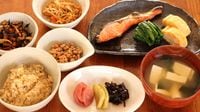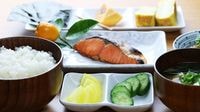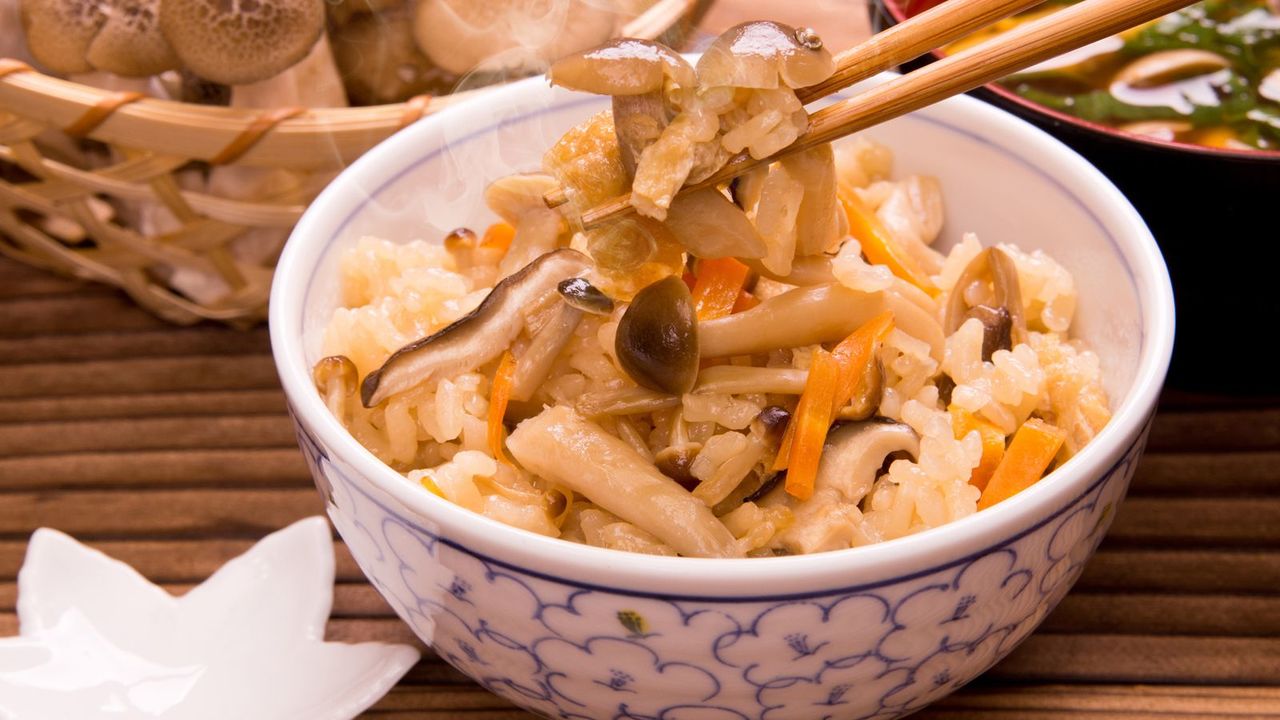
These days, many are choosing a gluten-free lifestyle. But artificially contrived gluten-free products such as pasta, bread and baked goods can be disappointing. With its rich tradition of rice-based dishes, Japanese cuisine beautifully suits a gluten-free diet. Here are six delicious, easy to prepare, gluten-free Japanese rice dishes for spring and summer.
Stir-fried rice with hijiki and Parmesan
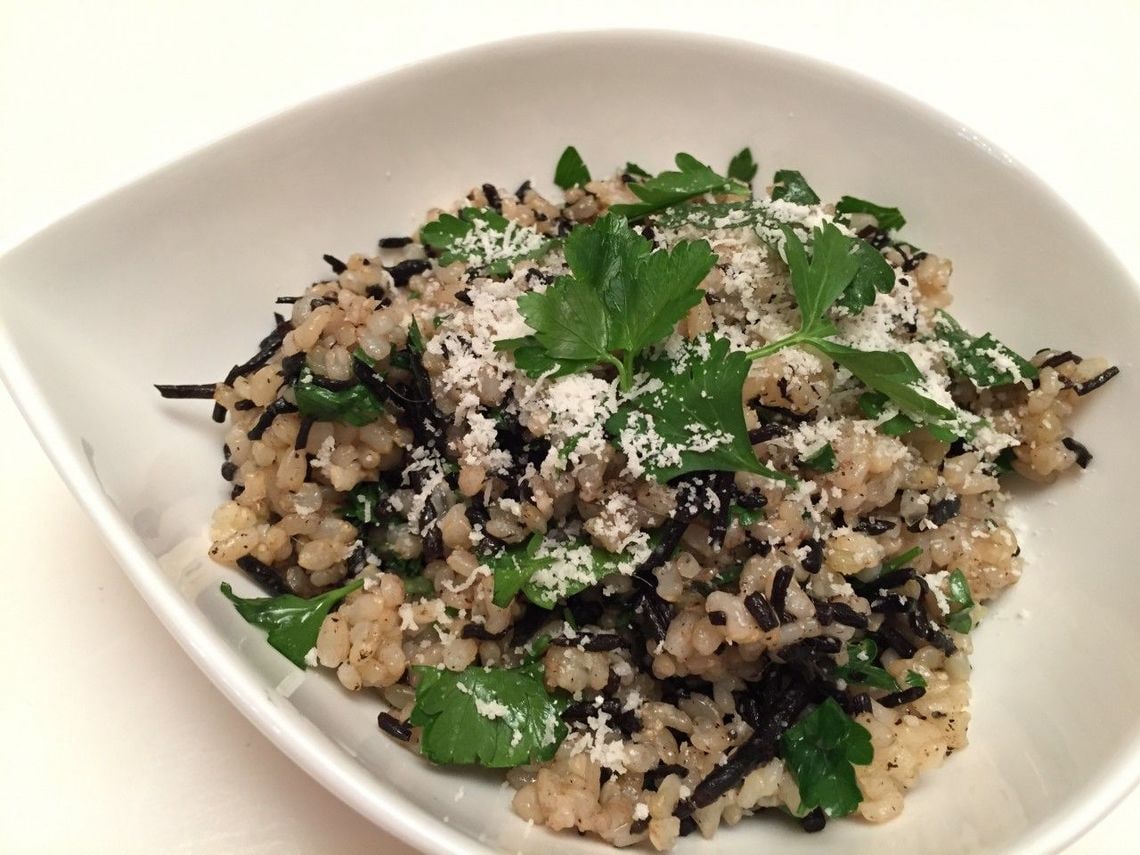
Stir-fried rice dishes make use of one- or two-day-old rice and other ingredients that happen to be on hand. This recipe is one I invented for American audiences to showcase hijiki, my favorite Japanese seaweed. Rich in dietary fiber and minerals, it also has a pleasantly crunchy texture and tastes of the sea. It uses the black hijiki along with Parmesan cheese, cilantro and ginger.
The cheese is the secret to the success of this dish, whose recipe was in my first cookbook, "The Japanese Kitchen." Fifteen years later, hijiki is much more widely available in this country.
Maze-gohan with parsley, shiso and egg
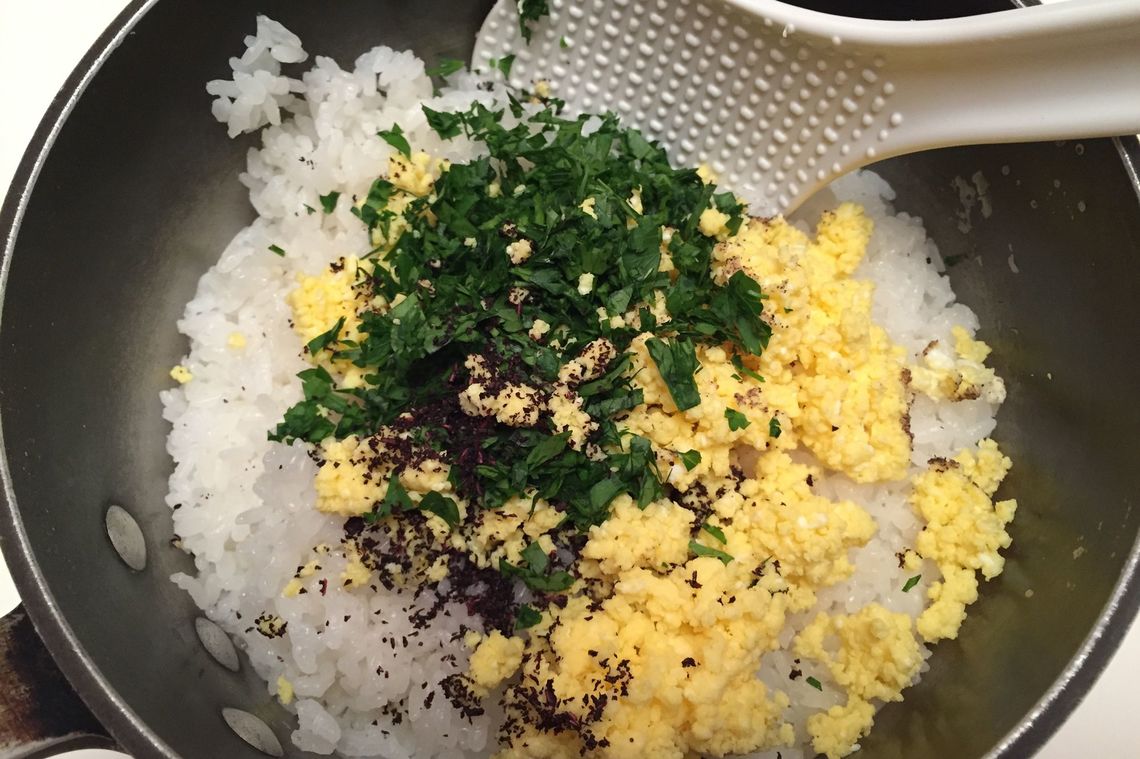
Maze-gohan, translated as "tossed rice," is a simple dish of cooked rice tossed with flavorings. This version uses chopped parsley, dried purple shiso leaves and scrambled egg -- ingredients that elevate the flavor, color and texture of plain cooked rice into a festive dish. Western-style flavorings can be used instead, such as ground black pepper, crisp butter-browned sliced garlic, finely chopped parsley and toasted pine nuts.
Maze-gohan goes well with any protein dish, such as fish, chicken or meat.
Donburi with teriyaki steak
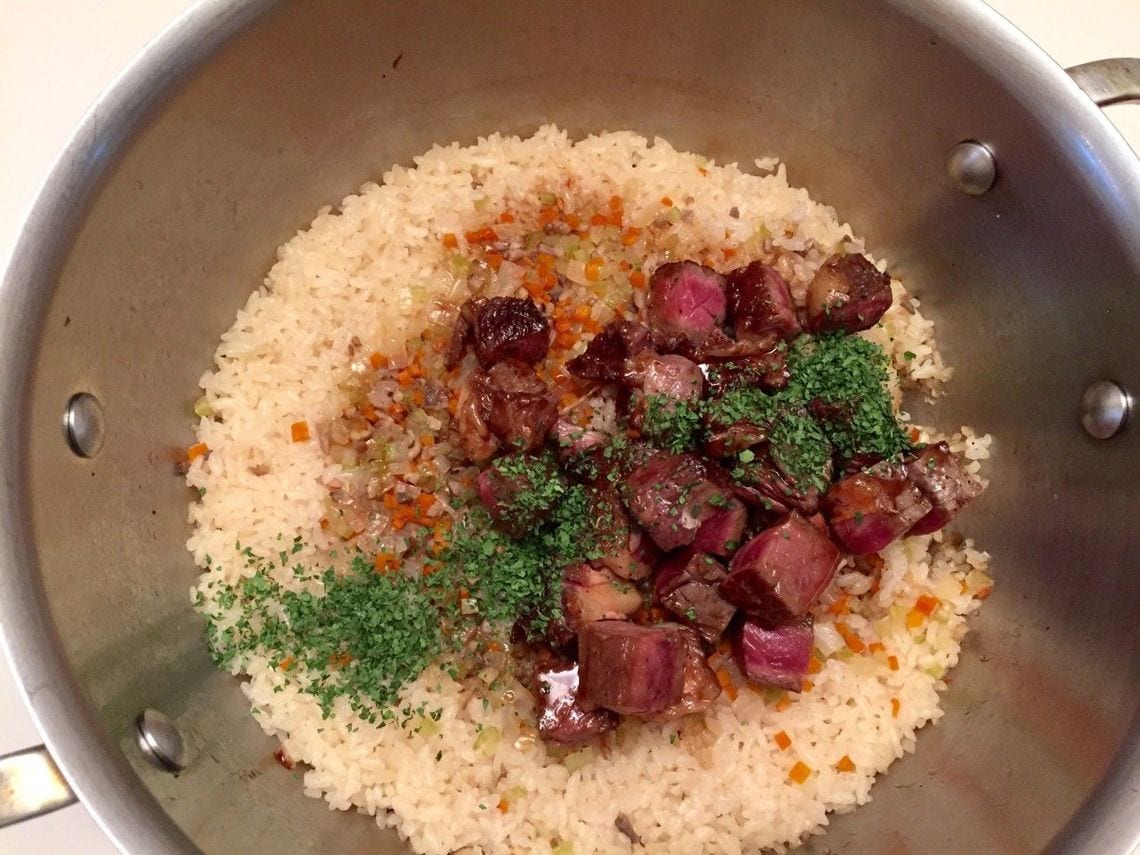
Donburi dishes combine cooked rice with a topping of separately cooked ingredients and sauce. This one is a beef lover's favorite: I cook the steak in a skillet, cut it into cubes and flavor them with a sizzling sauce of shoyu (Japanese soy sauce) and mirin (Japanese sweet cooking wine) to create everyone's favorite teriyaki sauce.
When it's time to serve the donburi, put the teriyaki beef and sauce over freshly cooked rice for a quick, mouthwatering dish. The sauce trickles down and gives its delicious flavor to the rice. A similar dish can be made with chicken teriyaki.
Takikomi-gohan with chorizo and peas
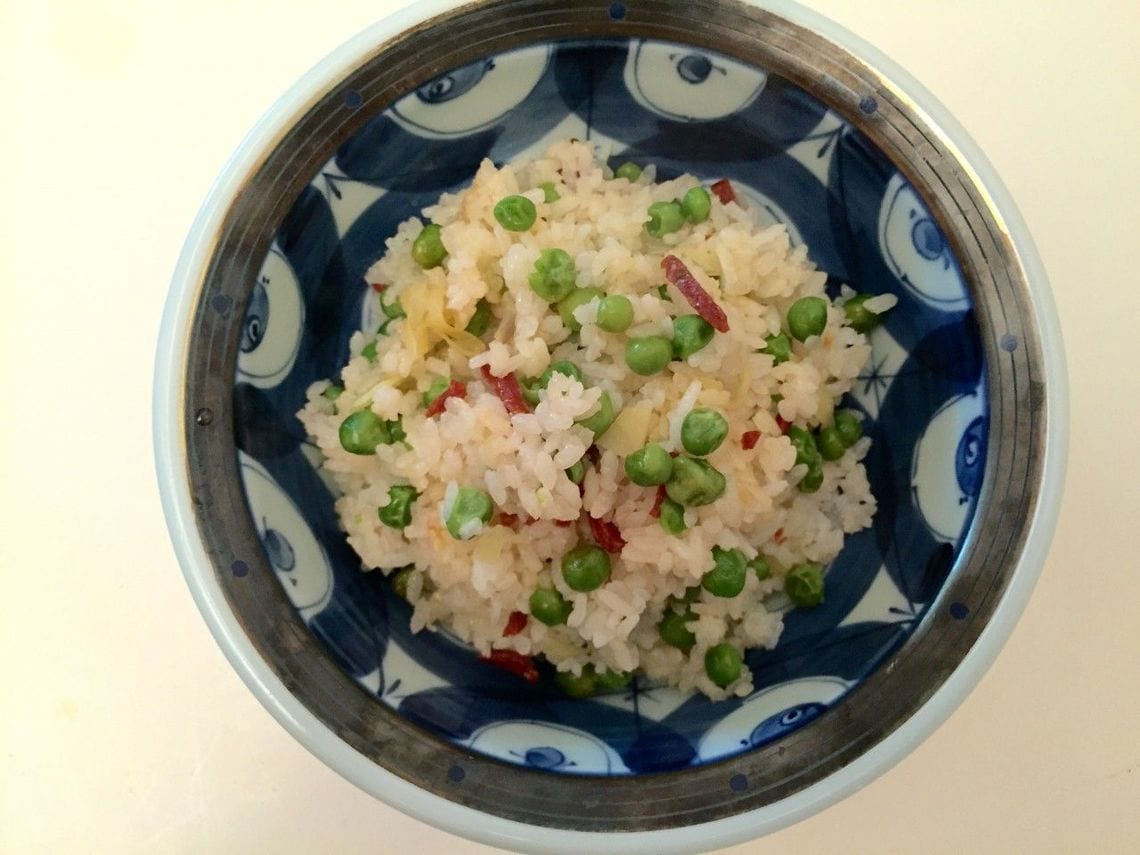
Takikomi-gohan is rice that is cooked with seasonal vegetables and/or seafood or poultry in kelp stock or dashi stock. It's like Japanese paella or risotto.
Spring pea rice is a traditional version of takikomi-gohan for spring or summer. The key to producing the best green pea rice is to blanch the peas in stock, then cook the rice in that stock and add the briefly cooked peas toward the end of rice cooking. This method keeps the peas very green and firm.
I emphasize the paella comparison by adding chorizo as well as ginger. Unlike paella or risotto, though, takikomi-gohan usually has no added butter or oil. This allows all the ingredients to speak for themselves in the dish.
Takikomi-gohan with mushrooms

For a version of takikomi-gohan studded with mushrooms, I use shimeji mushrooms for savory umami flavor, maitake for their fragrance and king mushrooms for their distinctive texture.
For all these rice dishes, I recommend that you use freshly picked vegetables and mushrooms from your local market or store. The natural taste and sweetness will come through.
Corn rice with shoyu and butter
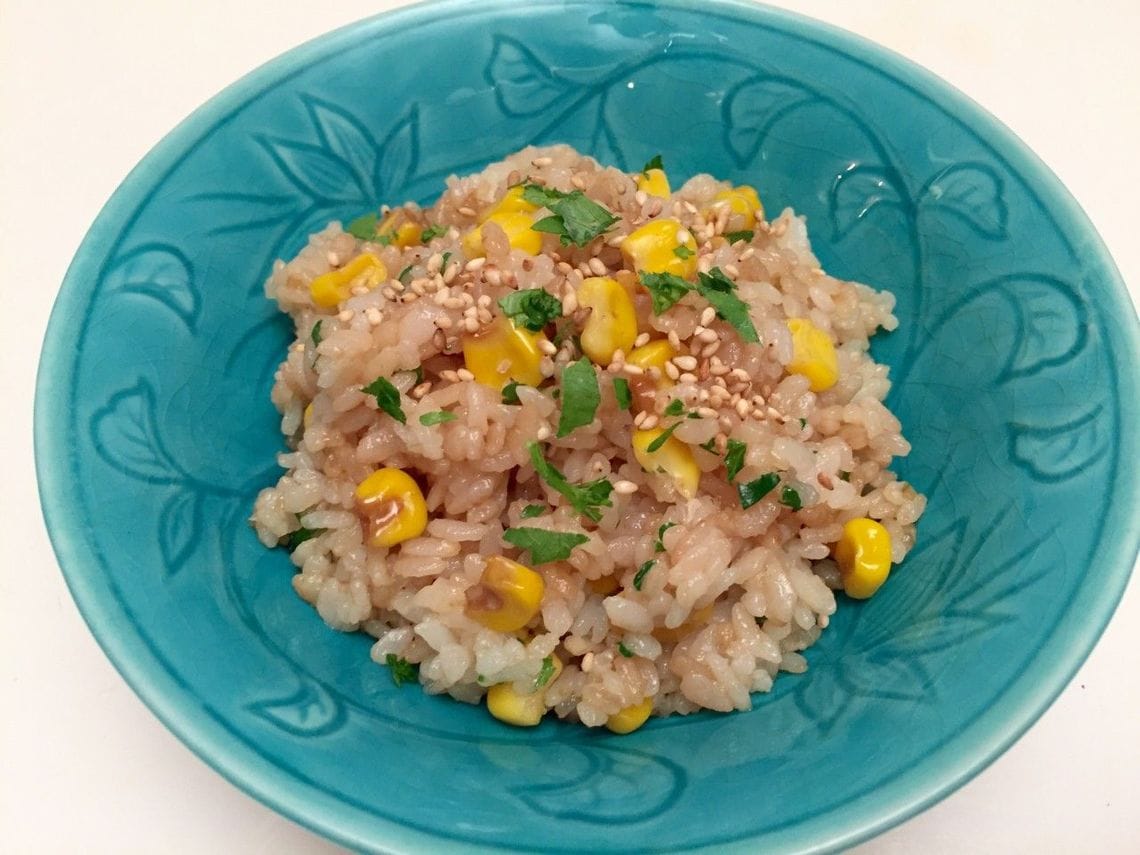
This version of takikomi-gohan is my favorite summer rice dish. I toss the steaming hot, corn-studded rice with the butter and shoyu. As the butter melts in the hot rice with shoyu, it creates a rich and savory flavor that everyone loves.
The diverse world of Japanese cuisine contains hundreds of such naturally gluten-free dishes. If you are looking for more recipes, consult my two books, "The Japanese Kitchen" and "Hiroko's American Kitchen." Both are widely available and contain detailed instructions to make some of the dishes described here.
(Written by Hiriko Shimbo via Zester Daily/Reuters)


